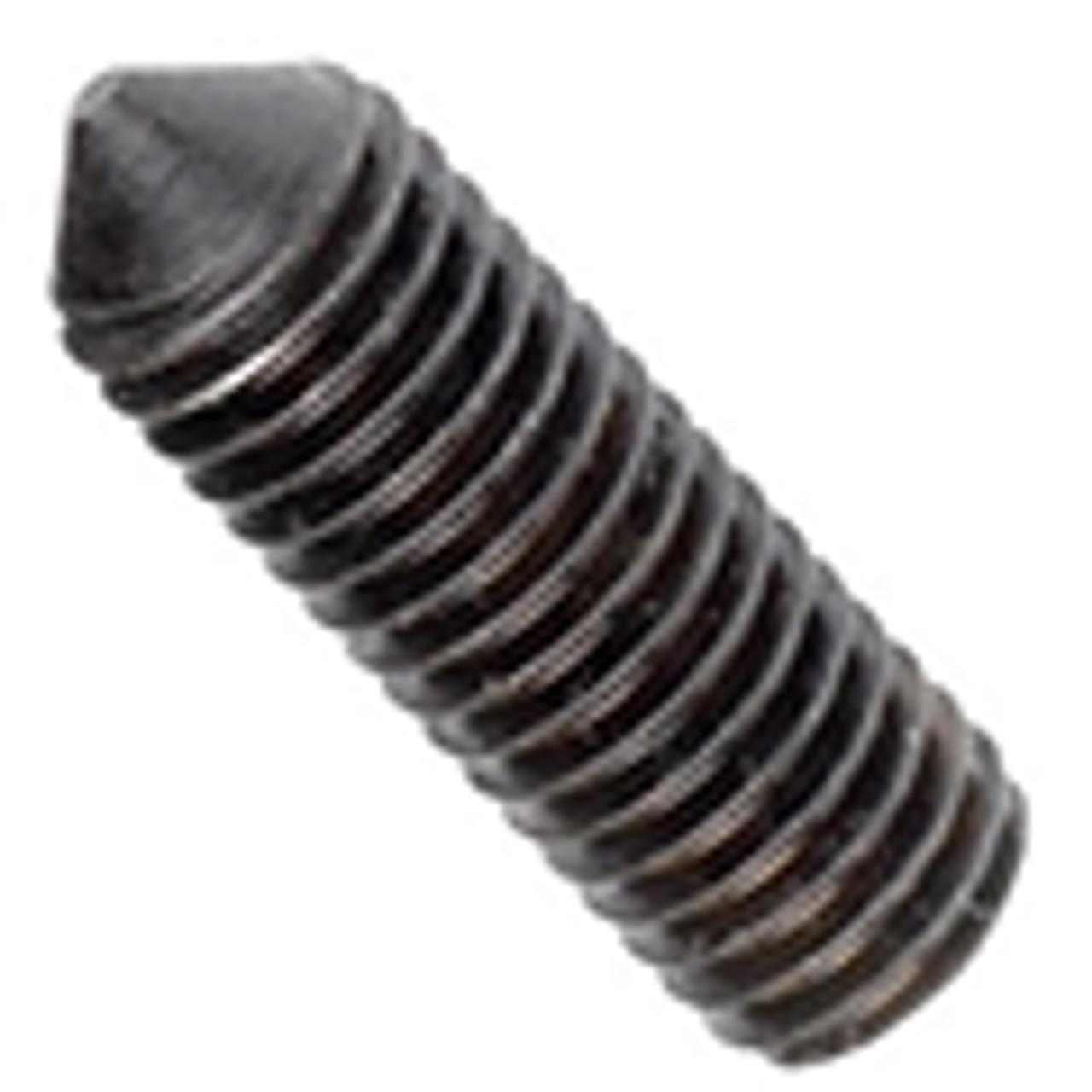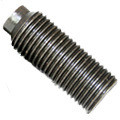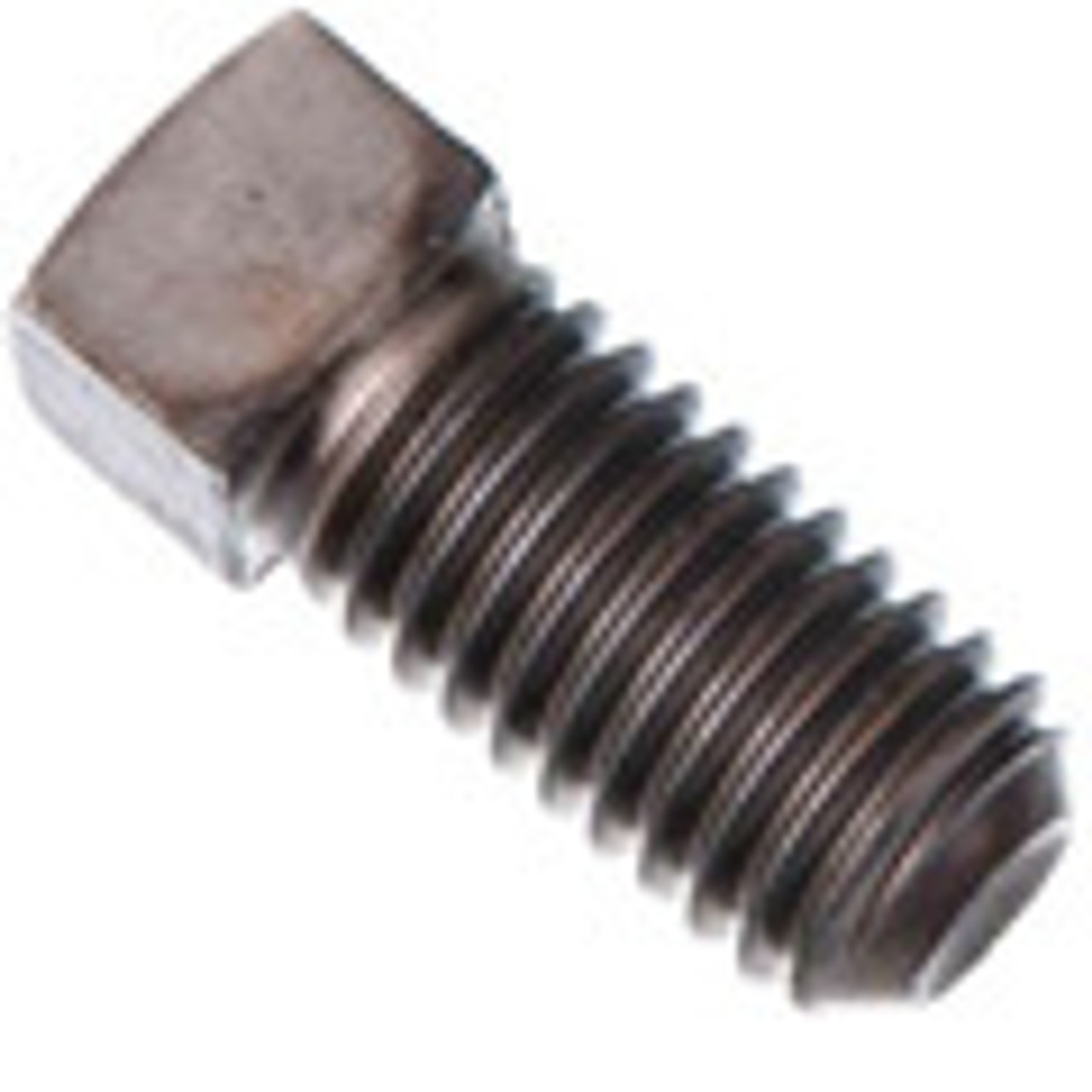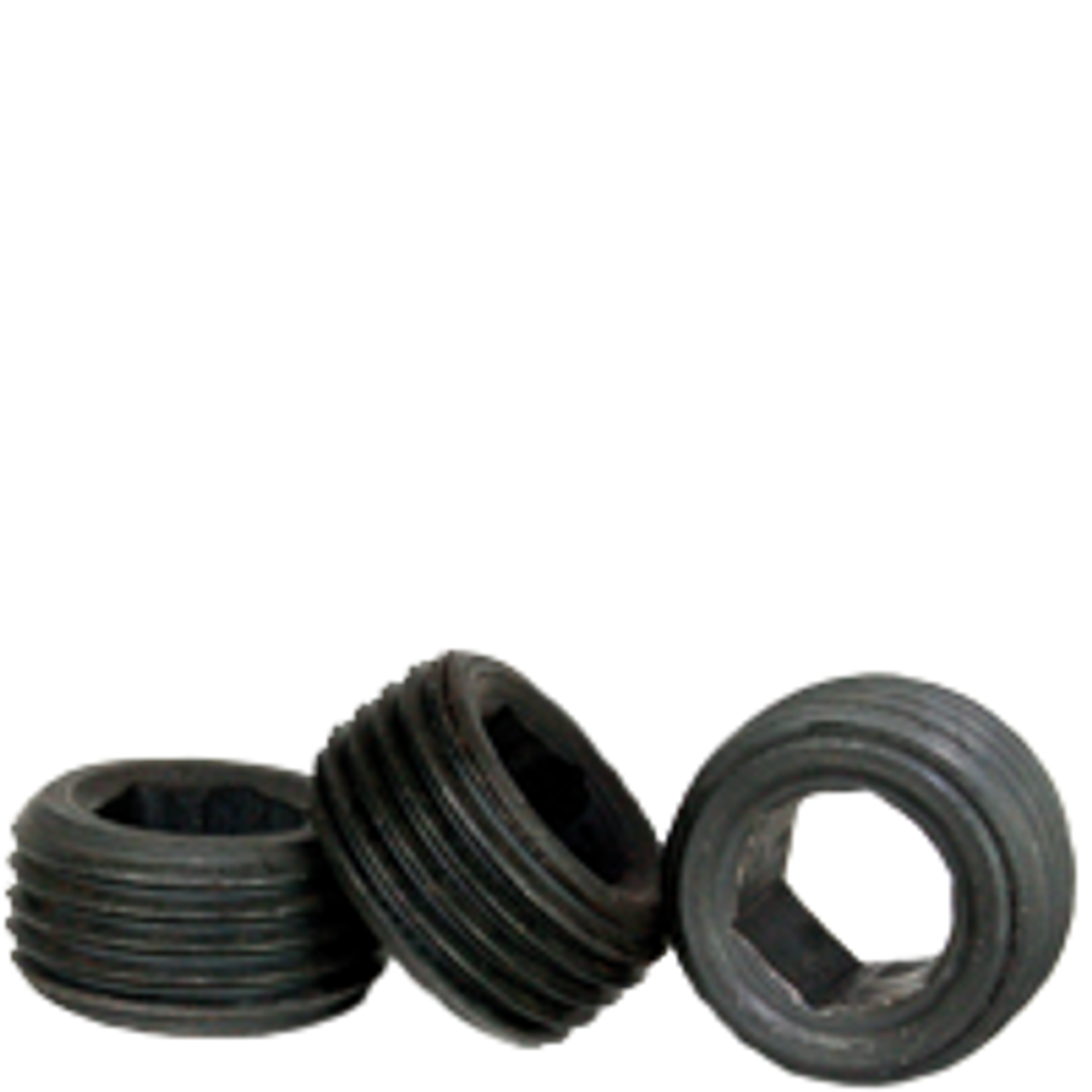Set Screws
Set screws, also known as grub screws, are a type of fastener that are commonly used to secure an object to a shaft or rod. They typically have a headless cylindrical shape with a hexagonal socket or a slotted or Phillips head on one end, and a pointed or flat tip on the other end.
The set screw is inserted into a pre-drilled hole in the object being secured, and tightened against the shaft or rod to prevent the object from moving or sliding along it. The set screw achieves this by creating friction between the object and the shaft, or by indenting into the surface of the shaft to create a mechanical lock.
Set screws are commonly made of steel or stainless steel, and are available in a variety of sizes and lengths to suit different applications. They are often used in machinery, automotive, and construction industries, as well as in DIY projects and household repairs.
Socket Set Screw Head Styles
Socket set screws, or grub screws, feature a headless (or blind) design, meaning that no head projects past the major diameter of the screw thread. They are driven with an internal-wrenching drive, most commonly a square or hex key. Conversely, square head set screws feature an external square head that enables wrench tightening even in confined spaces.
Socket Set Screw Point Styles
Cup point set screws feature a hex drive at one end and a cup-shaped indentation at the other. The most commonly used head style, the thin edge of the cup end digs into the contact surface for high holding power. It is useful for fast permanent and semi-permanent placement in applications where some indentation left by the cup end is acceptable.
Knurled cup set screws feature one slight variation from the cup point set screw. This style has serrated ridges, or knurls, in the indented cup that bite into the contact material and effectively lock in place for a powerful grip that resists loosening caused by vibration. As with the cup point, a certain amount of scaring on the surface of the contact material is likely. Knurled set screws should not be re-used because the knurled ridges suffer damage upon removal and therefore offer less strength upon re-setting.
Also known as extended point set screws, dog point and half-dog point set screws feature a protruding tip with a flat surface on the end that opposes the hex drive. This protrusion is longer on the full dog set screw than on its half dog point relative. Designed for permanent setting, the protrusion should fit into a matching hole in the workpiece much as a dowel pin would.
Oval point socket set screws have a rounded, oval-shaped point that causes minimal surface damage at the contact site when installed. The minimal contact area allows the user to make slight adjustments without loosening the screw.
Flat point set screws possess a flat surface at the end opposite the hex socket drive. Surface damage caused by this point style is minimal because the blunt tip does not dig in at the contact point making the flat point the desired choice when minimal surface scaring is desired and for applications where frequent re-setting and relocation is necessary. Grounding the flat improves the grip at the contact point.
Cone point set screws have a sharp, cone-shaped point that wedges into the contact material thus delivering the strongest torsional and axial holding power of all the set screw styles. They are most often utilized in permanent settings, though they can also be used as a pivot or hanger.
Socket Set Screw Materials
The majority of socket set screws are manufactured from alloy steel with a minimum Rockwell hardness of C45. Steel set screws are strong, but not very resistant to corrosion though applied coatings or finishes can enhance their corrosion resistance. Nickel alloy set screws are good for marine and chemical-processing environments. They are strong, heat-resistant and slightly magnetic. Non-magnetic brass set screws are excellent conductors of electricity. For the maximum level of corrosion resistance, choose mildly magnetic stainless steel set screws.
Socket Set Screw Finishes
Socket set screws are typically supplied with a thermal black oxide finish which is a conversion coating that resists abrasions, reduces light glare and reflection and makes the surface of the fastener smoother. Other available finish processes include case hardened zinc, mechanical zinc, and zinc-bake Cr+3. Stainless steel set screws are usually left plain.
Socket Set Screw Features
Set screws, or grub screws, are available with applied nylon patches, nylon pellets and nylon tips for use when loosening from vibration is a problem. A nylon patch is a pre-applied engineered plastic threadlocking coating that is fused to the threads of the fastener. When the fastener is installed, the patch is compressed and acts like a wedge which creates a strong, self-sealing lock which stays strong even in stressful situations. A nylon pellet, or nylon plug, works in much the same way except that the threadlocking material is inserted into a pre-drilled hole in the side of the fastener. Fasteners with either nylon patches or pellets are adjustable and reusable.
Nylon tip set screws have a pre-applied pellet of nylon inserted into the set screw end. As the pellet is compressed, it performs a spring action that pushes back on the fastener and increases friction within the threads, thereby preventing the fastener from loosening. Additionally, the compressed insert acts as a barrier that prohibits marring or scaring of the contact surface.
Working on the same principle as a nylon tip, the soft, malleable end of a brass-tip set screw molds itself to the curvature of a shaft or contact surface, thus locking the fastener in place without marring the surface.
How do you remove stripped set screws?
Removing stripped set screws can be a bit tricky, but here are some steps you can follow to remove them:
-
Try using a larger wrench or Allen key: Sometimes, a stripped set screw can be removed by using a larger wrench or Allen key. The increased size can provide enough grip to loosen the screw.
-
Use a screw extractor: A screw extractor is a specialized tool that can be used to remove stripped screws. First, drill a hole into the center of the stripped set screw using a drill bit that's slightly smaller than the screw extractor. Then, insert the screw extractor into the hole and turn it counterclockwise. The screw extractor should grip onto the stripped screw and allow you to remove it.
-
Apply heat: Heating the set screw with a heat gun or a propane torch can sometimes help to loosen it. Heat the area around the set screw for a few minutes, and then try to remove it using a wrench or pliers.
-
Use pliers or vice grips: If the set screw has a visible part above the surface, you can use pliers or vice grips to grip onto it and turn it counterclockwise to remove it. Be careful not to damage the surface around the screw.
-
Cut a slot into the screw: If there is enough space around the stripped set screw, you can use a rotary tool with a cutting disk to create a slot across the top of the screw. Then, use a flathead screwdriver to turn the screw counterclockwise and remove it.
It's important to be patient when removing stripped set screws and to avoid applying too much force, as this can cause further damage. If you're unable to remove the screw using these methods, it may be best to seek the help of a professional.
Set Screw Resources:
- Set Screw Dimensions & Specifications
- Threadlocker & Nylon Patch Services
- Metal Plating, Coating & Painting













